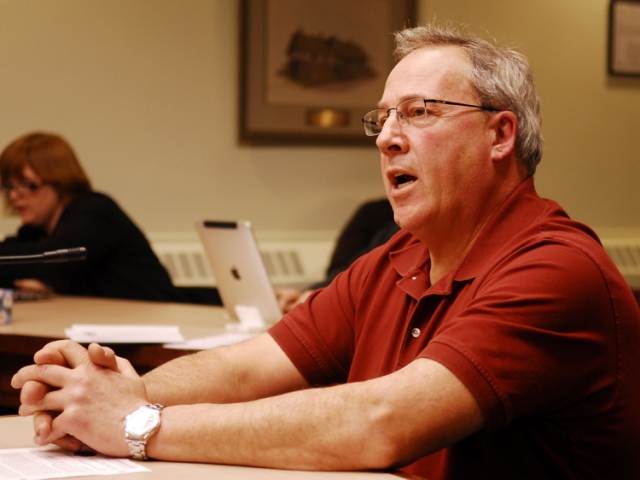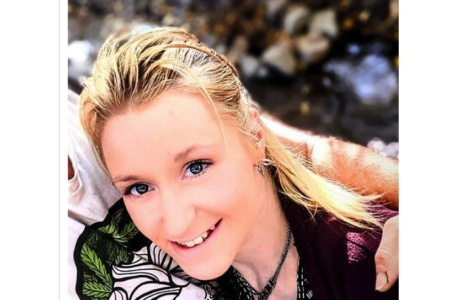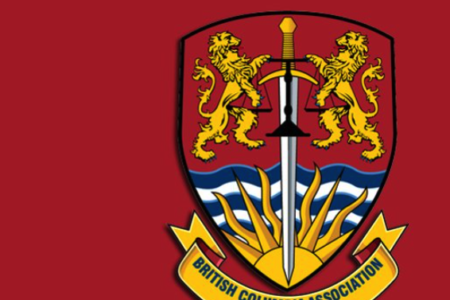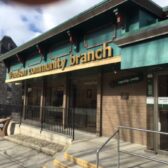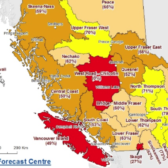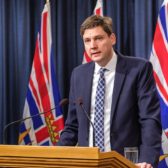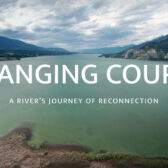Backyard burning a smoking success: fire chief
By Timothy Schafer, The Nelson Daily
The people have spoken and backyard burning in the name of reducing the fire hazard in the city was a success, says the City’s fire chief in a report to council.
Simon Grypma told City council in their regular meeting Monday night that the one month backyard burning experiment in the city in October came off with few hitches, and the overwhelming majority of people who applied for permits agreed it was a “wonderful” program.
“I would endorse this program again,” said chief Grypma as he delivered his report to council.
“The homeowners that chose to utilize this opportunity were able to reduce the wildfire risks on their personal property.”
The backyard burn period was the first in the city since 2007 when they issued 236 permits, compared to the 77 they issued this fall.
When a telephone survey of people who used backyard burn permits was done (25 people in all), it was found the permits were not used just for disposing of yard waste but for the cleaning up of woody debris (77 per cent) — a potential hazard in the instance of an interface forest fire.
At the Oct. 4 City council meeting council had approved a burning period from Oct. 5 through to Oct. 31. Council had requested at the meeting a report be prepared by the fire chief on the effectiveness of the burning period.
Of the 77 permits issued, only one permit was not acted upon (due to time and weather venting).
The majority of materials burned consisted of small to medium diameter branches and yard waste, with three homeowners burning larger wood materials such as logs and trees.
Most people (77 per cent) said they not only wanted to avoid a trip to the waste transfer station, but they also wished to assist the City in their Community Fire Smart Initiative to reduce the risk of an interface fire.
One person said their efforts were entirely focused on reducing the woody debris as far back as 30 metres into the forest. Coun. Donna Macdonald was curious about that property owner.
“They weren’t burning the forest material right there?” she asked.
“No,” said chief Grypma.
“Were there any complaints from community?” asked Coun. Deb Koazak.
Two, chief Grypma replied. One was a violation of the permit in that it was a larger fire than was allowed, it was unattended and the homeowner was burning building material. The violation resulted in a $300 fee for service for extinguishing the unattended fire.
“But for the most part people were considerate in following the guidelines,” the fire chief said.
In the future, any further burn permits issued should consider the size, location of the property within the interface area, and access as a determining factor for issuing such a permit, said chief Grypma.
Coun. Macdonald moved an amendment on the motion for the receipt of the report that the fire department develop a policy for backyard burning in the future for the Fire Smart program.
City manager Kevin Cormack said there is a policy on venting and the size of the fire allowed in the city.
“The current policy covers all of the bases,” he said, “but if you do want us to do some work on that we can. If you think it is sufficient, all council has to do is decide if they want another burn period or not.”
“I’m looking at the chief’s final comments (in the report) that he was looking at refining the policy, and I had hoped he would do that and then come back to us with his recommendations,” said Coun. Macdonald.
The only recommendation the fire department could make is that the burning period worked, said chief Grypma.
Coun. Kozak said one thing council did with allowing the limited October burn period was to ensure air quality in community was still largely preserved.
Where there’s smoke, there’s fuel mitigation
Work will begin today on the fuel mitigation prescription for Rosemont Park.
The consultation period with the neighbourhood drew no interested folk out; even so, said chief Grypma, the efforts used in the clearing of deadfall and reducing underbrush will be respective of the people who live nearby.
Met with the contractor and reviewed the type of work that would be best suited for that area. Weather would play a large part in the process and what type of equipment is going to be used, as well as the cleanup they will be able to conduct.
There are certain areas that are going to be suited for piling and burning on site, he said, so they will be issuing some burn permits for specific areas of the park. This means a machine won’t have to go in and clean up the park.
The contractors have been given the okay to use a “very small” excavator to drag some of the dead trees out so they can be utilized as fire wood instead of burning in the forest.
“We’re looking at every avenue of fuel mitigation in that park to have the least amount of impact on the neighbourhood … and yet have the best action in the park,” he said.



